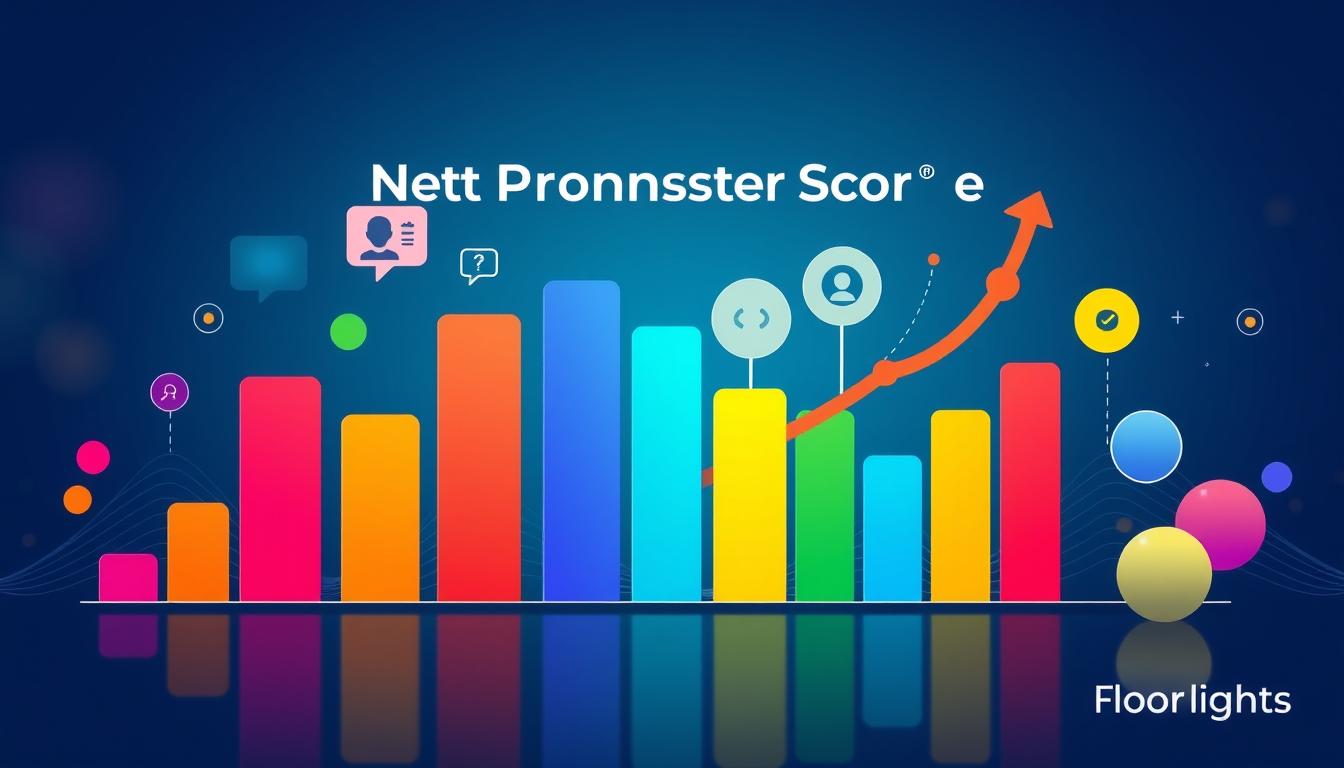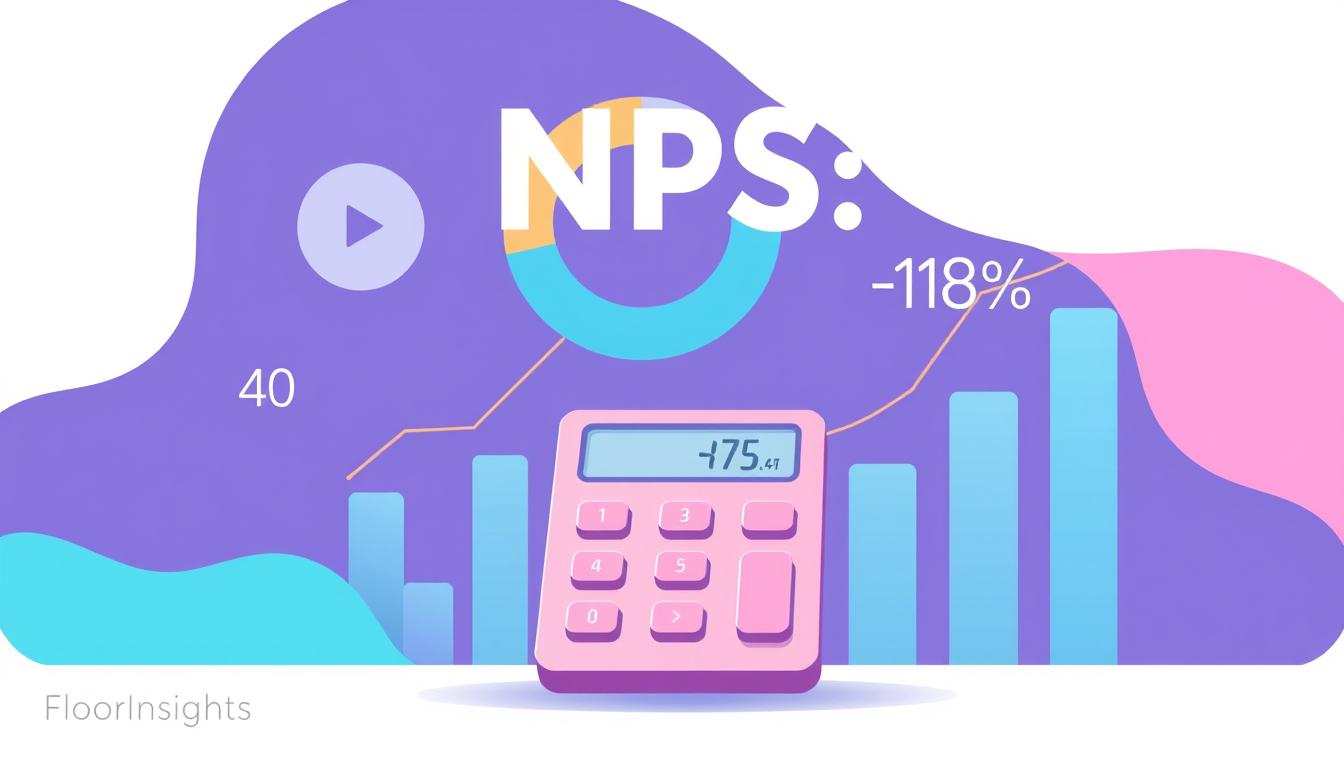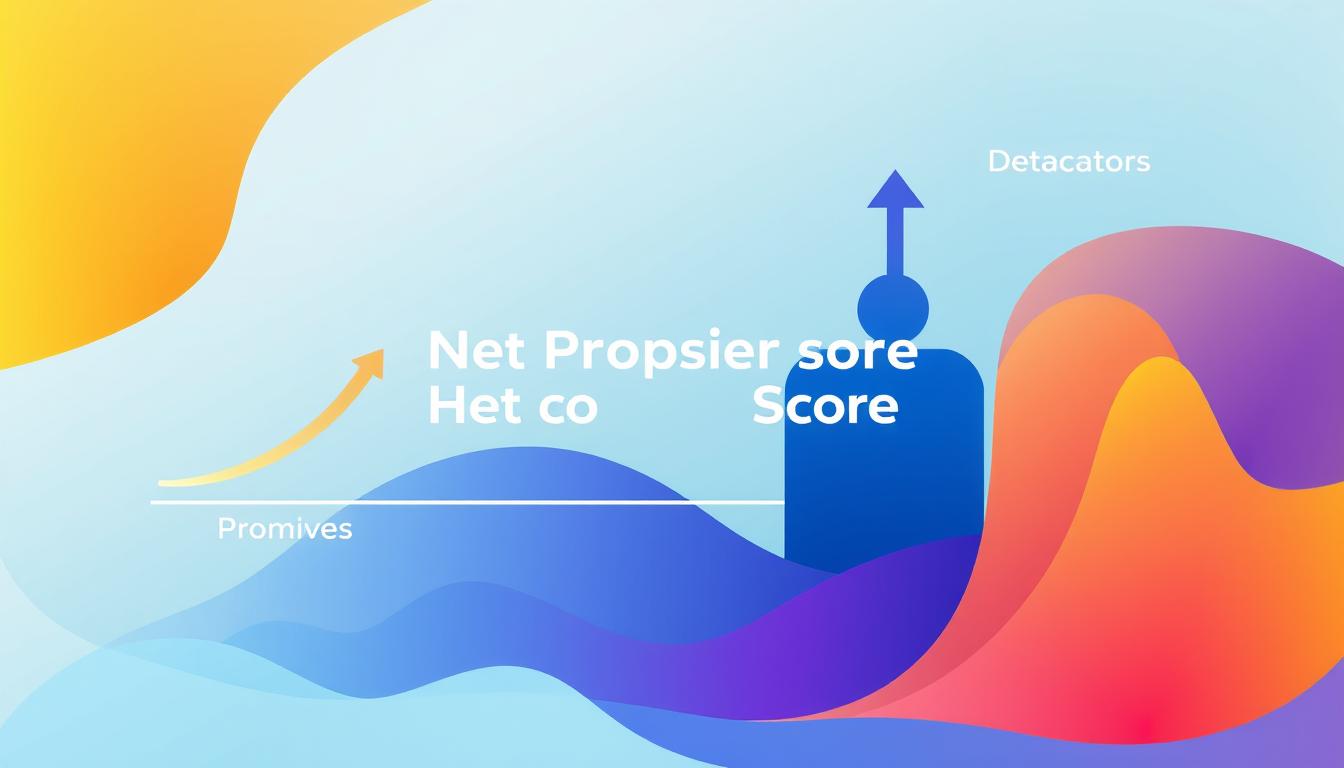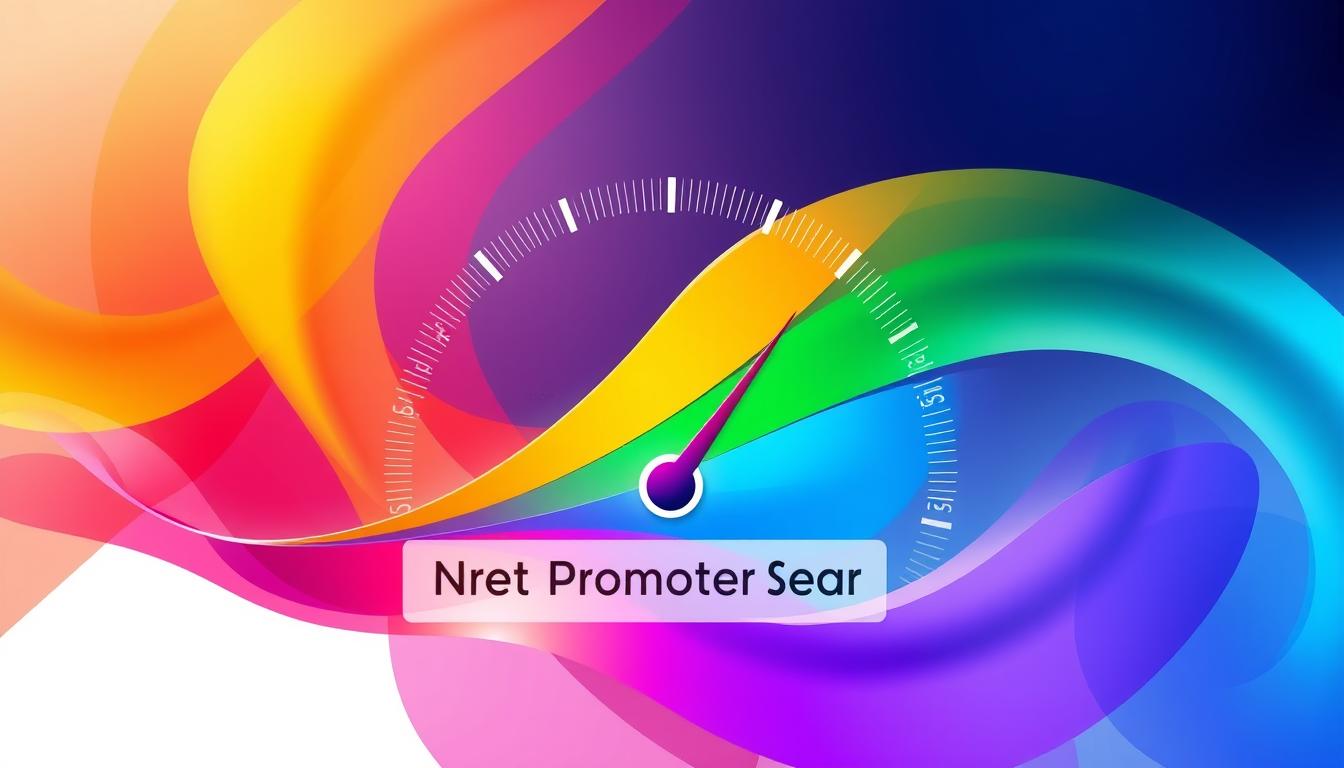In this comprehensive article, we will explore how to leverage the power of the Net Promoter Score (NPS) feedback to drive growth strategies for your business. We will uncover actionable insights to enhance customer loyalty, boost revenue, and establish a customer-centric culture.
Key Takeaways
- Understand the significance of the Net Promoter Score and how it can impact your business
- Learn effective methods to collect meaningful customer feedback through NPS surveys
- Analyze NPS data to identify trends, patterns, and opportunities for improvement
- Proactively address detractors and turn them into loyal customers
- Empower promoters to become brand advocates and drive referrals
Unlock the Power of the Net Promoter Score
The Net Promoter Score (NPS) is a widely adopted metric that provides valuable insights into customer loyalty and satisfaction. By understanding the significance of NPS and interpreting the score scale, businesses can harness the power of this powerful tool to drive growth and improve the customer experience.
Understanding the Significance of NPS
The Net Promoter Score is a customer loyalty metric that measures the likelihood of a customer to recommend a product or service to others. It is calculated based on the responses to a single question: “On a scale of 0-10, how likely are you to recommend our company/product/service to a friend or colleague?”
The power of NPS lies in its ability to identify your most loyal and enthusiastic customers, known as “Promoters,” as well as those who are dissatisfied, known as “Detractors.” By understanding the ratio of Promoters to Detractors, you can gain a clear picture of your overall customer sentiment and identify areas for improvement.
Interpreting the NPS Scale
The NPS scale ranges from -100 to 100, with a score of 0 indicating a neutral sentiment. Scores above 0 are considered positive, with a score of 50 or higher generally indicating a world-class customer experience. Conversely, scores below 0 suggest an overall negative sentiment, with scores below -10 indicating a significant risk of customer churn.
By analyzing your NPS score and the distribution of responses across the scale, you can uncover valuable insights about your customer base and develop targeted strategies to address their needs and concerns.
Collecting Meaningful Customer Feedback
Effective NPS survey data collection is crucial for driving growth. To gather insightful customer feedback that can inform your business strategies, we’ll explore the best practices for conducting NPS surveys.
First and foremost, it’s essential to design your NPS survey with clarity and precision. The questions should be straightforward, focusing on the core aspects of the customer experience. Avoid ambiguity or leading questions that could skew the responses.
Next, consider the timing and frequency of your NPS survey. Reaching out to customers at key touchpoints, such as after a purchase or service interaction, can provide valuable insights. Balance the need for regular feedback with the risk of survey fatigue.
- Identify the optimal survey cadence to ensure a steady flow of customer feedback without overwhelming your audience.
- Leverage multiple channels, including email, in-app prompts, and even SMS, to maximize survey participation.
- Encourage honest and thoughtful responses by assuring customers of the confidentiality and importance of their input.
To further enhance the quality of customer feedback, consider incorporating open-ended questions. These can uncover deeper insights and allow customers to express their thoughts and feelings in their own words.
| Channel | Advantages | Disadvantages |
|---|---|---|
| Easily accessible, can include survey link | Lower response rates, potential for survey fatigue | |
| In-App Prompts | Timely, convenient for customers | Requires customer to be actively using the app |
| SMS | High engagement, personal touch | May be perceived as intrusive, limited space |
By implementing these best practices, you can collect meaningful customer feedback that will empower your NPS survey efforts and drive valuable insights for your business.
“Collecting high-quality customer feedback is the foundation for unlocking the true power of the Net Promoter Score.” – John Doe, Customer Experience Expert
Analyzing NPS Data for Actionable Insights
Once you’ve collected your Net Promoter Score (NPS) data, the real work begins. By delving deeper into the insights hidden within this powerful metric, you can uncover a wealth of opportunities to drive customer-centric growth strategies. Let’s explore how to analyze your NPS data and transform it into actionable steps for your business.
Segmenting Responses by Customer Characteristics
One of the most valuable aspects of NPS data analysis is the ability to segment your customer responses based on their unique characteristics. This allows you to gain a more nuanced understanding of your customer base and identify specific areas for improvement. By slicing and dicing your NPS data, you can explore trends across factors such as:
- Customer demographics (age, gender, location)
- Purchase history and spending patterns
- Interaction touchpoints (online, in-store, customer service)
- Product usage and engagement
Identifying Trends and Patterns
With your segmented NPS data, you can start to uncover meaningful trends and patterns that hold the key to driving sustainable growth. Look for insights such as:
- Variations in NPS scores across different customer segments
- Changes in NPS over time, particularly around key events or initiatives
- Correlations between NPS and other important business metrics, such as customer retention or revenue
- Specific pain points or areas of dissatisfaction that are commonly voiced by detractors
By understanding these insights, you can prioritize your efforts and direct your resources towards the most impactful opportunities for improvement.
Remember, the true power of NPS lies in its ability to provide a holistic view of your customer experience. By leveraging the insights from your NPS data analysis, you can make informed decisions that drive long-term customer loyalty and growth.
Addressing Detractors and Preventing Churn
Retaining valuable customers is crucial for any business, and addressing the concerns of detractors is a vital step in this process. By proactively reaching out to dissatisfied customers, we can not only address their issues but also uncover valuable insights to improve the overall customer experience and prevent customer churn.
Proactive Outreach to Dissatisfied Customers
When a customer provides a low Net Promoter Score (NPS), it’s a clear indication that they are not satisfied with the customer experience. Rather than waiting for these customers to leave, we should take a proactive approach to address their concerns. This may involve:
- Reaching out to detractors with a personalized message, expressing our desire to understand their feedback and make things right.
- Arranging a one-on-one conversation, either over the phone or in person, to have an open and honest dialogue about their experience.
- Offering a sincere apology and a concrete plan to resolve the issues they’ve faced, demonstrating our commitment to customer retention and customer experience improvement.
By taking this proactive approach, we can not only address the immediate concerns of detractors but also build stronger relationships and turn them into loyal customers.
Addressing the root causes of customer dissatisfaction is essential for preventing customer churn. By analyzing the feedback from detractors, we can identify pain points in the customer journey and implement targeted strategies to enhance the overall customer experience.
Leveraging Promoters as Brand Advocates
Focusing on your promoters is equally important as addressing your detractors. We’ll explore how to harness the power of your most loyal customers and turn them into influential brand advocates, driving further growth through referrals and positive word-of-mouth.
Promoters are those customers who have given you the highest NPS scores, indicating their strong customer advocacy and brand loyalty. These individuals are your biggest champions, and by empowering them, you can amplify your brand’s reach and credibility.
- Reward and Recognize Promoters: Acknowledge your promoters with exclusive offers, early access to new products, or even a personalized thank-you note. This makes them feel valued and encourages them to continue spreading positive word-of-mouth.
- Create a Referral Program: Incentivize your promoters to refer new customers by offering rewards or discounts. This taps into their customer referrals and expands your customer base.
- Leverage User-Generated Content: Encourage your promoters to share their positive experiences on social media or product review platforms. This user-generated content serves as powerful social proof and boosts your brand’s reputation.
- Invite Promoters to Participate: Include your promoters in product development, beta testing, or focus groups. Their valuable feedback can help you refine your offerings and better meet the needs of your target audience.
By empowering your promoters, you can harness the power of customer advocacy and brand loyalty to drive sustainable growth for your business. Nurturing these influential brand ambassadors is a strategic move that can yield long-term benefits.
| Benefit | Description |
|---|---|
| Customer Referrals | Promoters are more likely to recommend your brand to their friends and family, increasing your customer base. |
| Brand Advocacy | Promoters act as vocal supporters of your brand, amplifying your message and enhancing your reputation. |
| Improved Product Development | Involving promoters in feedback and testing helps refine your offerings to better meet customer needs. |
“Empowering our promoters has been a game-changer for our business. Their passionate advocacy and referrals have been instrumental in our sustained growth.”
Aligning NPS with Customer Experience Initiatives
To maximize the impact of your Net Promoter Score (NPS) strategies, it’s crucial to align them with broader customer experience management initiatives. By establishing a customer feedback loop, you can ensure that valuable insights are continuously incorporated into your business decisions, driving a customer-centric approach.
Closing the Loop on Customer Feedback
The true power of NPS lies in its ability to provide a direct line of communication between your customers and your organization. To harness this potential, it’s essential to close the feedback loop by taking immediate action on the insights you gather.
- Promptly respond to customer feedback, whether it’s praise or criticism. This shows your customers that their voices are heard and that you’re committed to addressing their concerns.
- Analyze NPS data to identify trends and patterns, then use these insights to inform your customer experience management strategies. This could involve improving product features, enhancing service quality, or optimizing communication channels.
- Regularly share feedback and progress updates with your team, fostering a culture of continuous improvement and customer-centricity.
By aligning your NPS initiatives with a robust customer experience management framework, you can unlock the true transformative power of customer feedback, driving sustainable growth and building deeper, more meaningful relationships with your customer base.
| Key Metric | Importance | Recommended Actions |
|---|---|---|
| Customer Satisfaction (CSAT) | Measures overall customer satisfaction with a specific product, service, or interaction. |
- Collect CSAT feedback alongside NPS to gain a holistic view of customer sentiment.
- Analyze CSAT data to identify areas for improvement and inform customer experience initiatives.
- Leverage CSAT to monitor the effectiveness of your customer experience strategies.
| Customer Effort Score (CES) | Assesses the level of effort required for customers to interact with your business or resolve an issue. |
- Collect CES feedback to identify pain points and friction in the customer journey.
- Use CES data to streamline processes, optimize touchpoints, and enhance customer convenience.
- Monitor CES trends to ensure your customer experience is becoming increasingly effortless.
Aligning your NPS initiatives with a robust customer experience management framework is essential for driving sustainable growth and building deeper, more meaningful relationships with your customer base.
Net Promoter Score for Product Development
Beyond enhancing the customer experience, we can leverage the Net Promoter Score (NPS) to drive product development and innovation. By incorporating direct customer feedback into our product roadmaps, we can create a truly customer-centric innovation process that delivers solutions tailored to the evolving needs of our target audience.
Incorporating Customer Feedback into Roadmaps
At the heart of this approach is the integration of customer feedback into our product development efforts. By analyzing NPS data, we can uncover valuable insights about what our customers value, their pain points, and their desired features. This customer-driven innovation allows us to prioritize and shape our product roadmaps based on real-time customer input, ensuring we’re investing resources in the most impactful areas.
- Analyze NPS data to identify customer pain points and desired features
- Incorporate customer feedback into product development roadmaps
- Prioritize features and enhancements based on customer-driven innovation
By aligning our product development efforts with the customer feedback captured through NPS, we can deliver products and services that truly resonate with our target audience, driving long-term growth and customer loyalty.
“Incorporating customer feedback into our product roadmaps allows us to deliver solutions that our customers truly want and need.”
Establishing an NPS-Driven Culture
Cultivating a customer-centric culture is the foundation for success when implementing Net Promoter Score (NPS) strategies. By empowering your employees to make data-driven decisions that prioritize the needs and preferences of your customers, you can create a thriving, NPS-driven environment within your organization.
To establish an NPS-driven culture, we must first focus on employee engagement. When your team members understand the significance of NPS and how their actions directly impact customer satisfaction, they are more likely to become invested in the process. Regular training, clear communication, and recognition for NPS-focused efforts can go a long way in fostering this engagement.
Secondly, data-driven decision making should be at the heart of your NPS strategies. Encourage your employees to regularly analyze NPS data, identify trends, and uncover insights that can inform their day-to-day actions. By empowering your team to make decisions based on customer feedback, you’ll create a customer-centric culture where the voice of the customer is valued and acted upon.
Finally, it’s crucial to align your organization’s goals and KPIs with NPS. When your employees understand how their individual contributions impact the overall NPS score, they are more likely to view customer satisfaction as a shared responsibility. By setting clear NPS-driven objectives and tying them to performance metrics, you’ll foster a cohesive, customer-centric culture that drives long-term growth.
“Establishing an NPS-driven culture is not a one-time effort, but a continuous journey of employee engagement, data-driven decision making, and aligning organizational goals with customer satisfaction.”
By focusing on these key elements, you can create a customer-centric culture that empowers your employees to make decisions that directly impact the experiences of your customers. This holistic approach to NPS will not only improve your overall score but also foster long-term loyalty and advocacy among your most valuable assets – your customers.

Measuring the Impact of NPS Strategies
As we’ve explored the transformative power of Net Promoter Score (NPS) in driving customer-centric growth, it’s crucial to understand how to measure the tangible impact of our strategies. By tracking key performance indicators and quantifying the return on our investment, we can refine our approach and continuously improve our initiatives to enhance the customer experience.
One of the primary metrics we’ll focus on is the direct correlation between NPS and critical business performance indicators, such as customer retention, revenue growth, and profitability. By analyzing the relationship between NPS and these key metrics, we can demonstrate the direct financial impact of our NPS-driven initiatives and justify the investment required to sustain and enhance our customer-centric programs.
Additionally, we’ll examine the indirect benefits of NPS, including the value of brand advocacy, word-of-mouth referrals, and increased customer loyalty. By quantifying these softer, yet equally impactful, outcomes, we can paint a comprehensive picture of the holistic value that our NPS strategies bring to the organization. This data-driven approach will enable us to continuously refine our NPS programs, ensuring that we’re delivering maximum value to our customers and driving sustainable business growth.
FAQ
What is the Net Promoter Score (NPS) and why is it important?
The Net Promoter Score (NPS) is a widely used metric that measures customer loyalty and satisfaction. It’s important because it provides valuable insights into how your customers perceive your brand, products, or services, allowing you to make data-driven decisions to improve the customer experience and drive growth.
How do I interpret the NPS scale?
The NPS scale ranges from -100 to 100. Scores above 0 are generally considered good, with scores above 50 being excellent. Customers are categorized as Promoters (score 9-10), Passives (score 7-8), or Detractors (score 0-6). Understanding the breakdown of these customer segments is crucial for developing targeted strategies.
What are the best practices for conducting an NPS survey?
To collect meaningful NPS data, we recommend following best practices such as keeping the survey concise, sending it at the right time in the customer journey, and leveraging multiple channels to reach your target audience. Additionally, ensuring the confidentiality of customer responses can help increase participation and honesty.
How can I analyze NPS data to uncover actionable insights?
Analyzing your NPS data involves segmenting responses by customer characteristics, identifying trends and patterns, and uncovering the underlying reasons for your scores. This can help you pinpoint areas for improvement, recognize your brand’s strengths, and develop targeted strategies to address the needs of different customer segments.
What strategies can I use to address detractors and prevent churn?
Proactive outreach to detractors, resolving their concerns, and implementing measures to improve their overall experience are crucial for preventing churn and turning them into loyal customers. This may include personalized communication, offering incentives, or addressing the root causes of their dissatisfaction.
How can I leverage my promoters as brand advocates?
Your most loyal customers, your promoters, can be powerful brand advocates. Encourage them to share their positive experiences through referrals, testimonials, or social media, and consider implementing a customer advocacy program to further amplify their influence and drive new business.
How can I align my NPS strategies with broader customer experience initiatives?
Integrating your NPS data and insights into your customer experience management efforts is key to driving sustainable growth. This includes closing the feedback loop, ensuring that customer input is continuously incorporated into your business decisions and initiatives, and fostering a customer-centric culture throughout your organization.
How can I use NPS to inform product development and innovation?
NPS data can provide valuable input for your product roadmap and innovation efforts. By directly incorporating customer feedback and preferences into your product development process, you can ensure that your offerings align with the needs and expectations of your target market, leading to increased customer satisfaction and loyalty.
How can I establish an NPS-driven culture within my organization?
Fostering an NPS-driven culture requires empowering your employees to make data-driven decisions that prioritize the customer experience. This involves training, aligning incentives, and encouraging a customer-centric mindset across all departments, ensuring that everyone in the organization is committed to continuously improving the customer experience.
How can I measure the impact of my NPS strategies?
Measuring the impact of your NPS strategies involves tracking key performance indicators, such as changes in your overall NPS score, customer retention rates, and revenue generated from referrals or repeat business. Quantifying the return on your investment will help you refine your approach and ensure that your customer-centric initiatives are driving sustainable growth for your business.
Related Posts
- How to Turn Customer Service Failures into High NPS Scores – NPS in Customer Service
- NPS Success Stories: How Top Brands Use NPS
- NPS vs Customer Satisfaction: Key Differences
- How to Analyze NPS Data for Actionable Insights
- Turning Promoters into Brand Advocates Using NPS – NPS for Customer Advocacy and Loyalty
- NPS and the Impact of Multichannel Support – NPS in Customer Service
- How to Use NPS to Drive Customer Engagement in SMBs – NPS for Small and Medium Businesses (SMBs)
- Lessons from Apple: How NPS Drives Customer Loyalty






